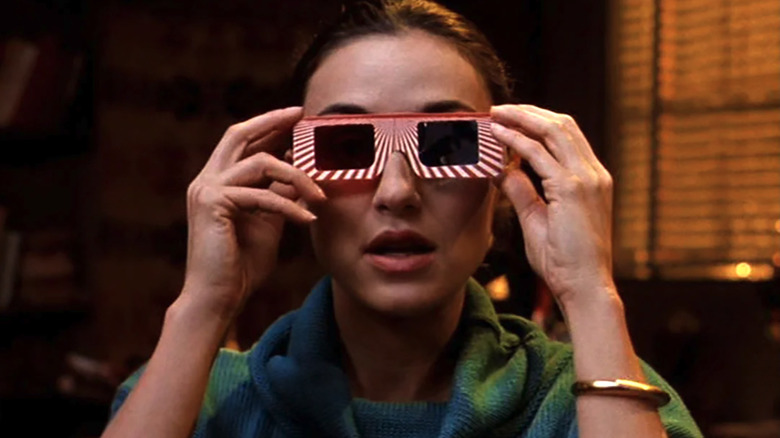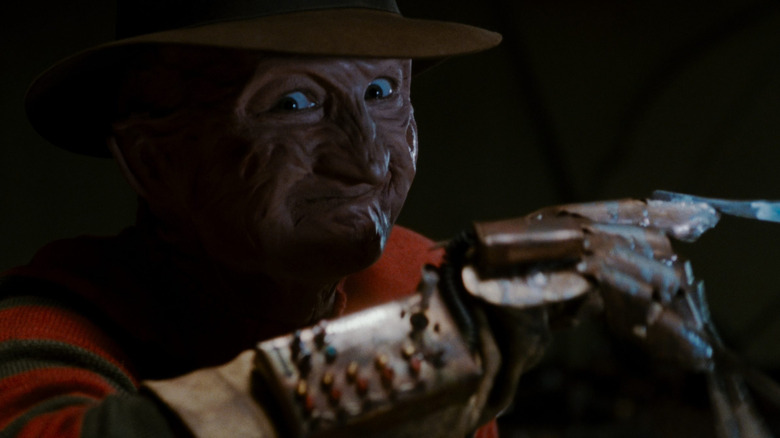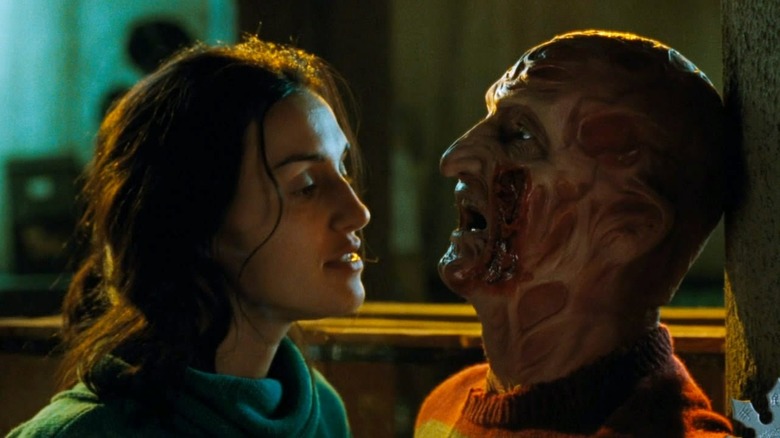Horror Fans Can Finally See The True Version Of Freddy Krueger's Death [Exclusive]
We may receive a commission on purchases made from links.
When the team at New Line Cinema set out to make "Freddy's Dead: The Final Nightmare," they intended to kill off the dream demon of Elm Street for good. The at-the-time sixth and intended final film of the franchise (which would be undone by "Wes Craven's New Nightmare," "Freddy vs. Jason," and the 2010 remake of the original), would see Freddy Krueger taken down once and for all, never to return to terrorize cinematic screens with a new outing ever again. Killing off Freddy Krueger wouldn't just be the end of a character, but one of the Mount Rushmore slasher icons that completely changed the genre forever. Freddy couldn't go out with a whimper; he needed to go out in the most explosive way possible, and in the year 1991, that meant taking things into 3D.
At the end of "Freddy's Dead," Krueger's long-lost daughter Maggie (Lisa Zane) decides to enter Freddy's mind and pull him into the real world to take him out. Once she's in the dream world, she puts on a pair of 3D glasses, which also signals to the audience to put on 3D glasses of their own to see the final showdown. She learns about her father's troubled past and the source of his demonic immortality, before bringing him into the real world and stabbing him with his own razor glove (and then blowing him up with a pipe bomb). Considering I was still in diapers when "Freddy's Dead" hit theaters, I obviously didn't get a chance to see the 3D in action. Unfortunately, that's the case for most Freddy fans, unless you somehow managed to get your hands on the "A Nightmare on Elm Street" DVD Collection box set released in 1999 that featured the 3D ending on special features. The original VHS release on home video did not include the 3D ending. Although the Laser Disc and DVD versions do feature the ending, without effective 3D glasses or a high-end TV, it never looked quite right.
However, with the recent release of the 7-film Steelbook set containing the entire "A Nightmare on Elm Street" franchise and advancements in technology, horror fans can now finally see the true vision. And as director Rachel Talalay told me during a recent interview, she's absolutely thrilled.
Freddy's Dead is a pivotal work of 3D
"The 3D was unbelievably difficult to do in those days with the amount of money that we had," Rachel Talalay explained. "I mean, that's the other side of it; that we had no money. We had so little money in those days for all the films." 3D movies are typically reserved for massive, larger-than-life big-budget blockbusters, not slasher films that are hailed for their microscopic budgets that make for massive profits. She says that the original "A Nightmare on Elm Street" film was pulled off for around a million dollars. By the time part six rolled around, they had upped the budget to roughly $6 million, but that budget included creating and incorporating a new technology for the film. "Freddy's Dead" was the first time New Line Cinema had ever dabbled in 3D filmmaking, so this was uncharted territory for them. But for those who were there, it was apparently awesome.
"It's completely thrilling for me because I've talked to people who saw the movie in the theater, and they say the 3D was kind of wonderful," Talalay says, "But it wasn't really very good at home because we were stuck with Anaglyph 3D (that's the red/blue 3D)." However, when they shot "Freddy's Dead," they shot it properly with two massive pin-registered cameras, and not just desaturating the image, which is what it looked like on most of the home video releases. "Now with digital technology, they were able to take the left and the right eye because we shot it properly," she says. "It's not what's currently done most of the time, which is post-3D, we shot in 3D [...] and they were able to take and digitally map the two eyes."
Bring it on, 3D newbies!
Because they actually shot the film to be in 3D, it always looked great in theaters but less-than-great at home. However, technology and home television picture quality have advanced to the point where the 3D theatrical experience can be replicated at home. Talalay has since done several 3D projects, but says that she truly believes the 3D in "Freddy's Dead" is "actually really good," and that seeing the ending the way it was meant to be seen will also change the experience for the audience due to the pacing shifts. As she explains:
"You tend to edit more slowly in 3D because it takes the eyes longer to catch up, and so all these people who've never seen the 3D never really see the pacing. And it feels more exciting because [...] the conclusion's all written around the 3D. So, for all these years looking at it in 2D, you will see much more of what we were aiming for in terms of the whole user experience."
And Talalay has no fear about multiple generations of fans seeing the film in a new light. "I am very excited, not scared at all," she says. "This is the best I've ever seen it." I can only hope that the new 4K restorations of the films also signal an increase in repertory theaters showing "Freddy's Dead: The Final Nightmare" on the big screen. As exciting as it is to watch the 3D at home, I want the 1991 experience, too!


